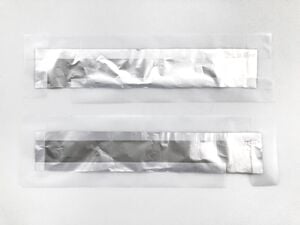This table compares aspects of different types of reflecting materials.
| Material | Reflectivity | Weight | Internet price quote | Advantages | Disadvantages |
|---|---|---|---|---|---|
| Polished Anodized Aluminum | ~95% | Light | ~$7/square foot | Reflective, lightweight, can be salvaged, structurally durable, easily flexed and shaped | Easily scratched, not super cheap |
| Mylar | >98% | Super light | $30 for a 4'x'50 roll | Super reflective, super light, super cheap | Not good at standing up to the elements, forms 'bubbles' if glue starts to give, requires a rigid backing |
| Aluminum Foil | 88% on bright side | Super light | $3.29 for 1.5'x70' roll | Extremely cheap and widely available | Not so reflective, corrodes when mixed with acidic juices, structurally weak, would only last one or 2 sessions |
| Can lids | 70-80% (my estimate) | Light | FREE | Widely Available, effective, salvageable, did I mention free?! | Not super reflective, non-uniform shape is labor intensive to use |
| Acrylic Mirror | 99% | Medium/Heavy | $78 for 1'x4' plane | Very reflective, nearly unbreakable | Comes in plane, likely very difficult to fit to parabola and still maintain reflectivity, super expensive |
| Glass Mirror | 99% | Very heavy | At least $100/square foot | Super reflective, widespread- meaning it could be salvaged | Very expensive new, comes in rigid plane- could be broken to fit paraboloid in mosiac in exchange for a precise focus |
| Astro-foil | 76% | Light | $37 for 1'x50' roll | Relatively strong | Not so relective |

(Note: Many potential materials with high reflectivity and strength are only available by special order from industrial companies. Though I have not tried to order or to ask for a donation of these fine products, the manufacturers usually deal in bulk. In addition, I am not sure a special-order industrial super-reflector meets this projects criteria of salvageablility and wide availability. That said, a bulk roll of high quality reflective material may be a wise investment for the aspiring do-it-yourself solar technician.)